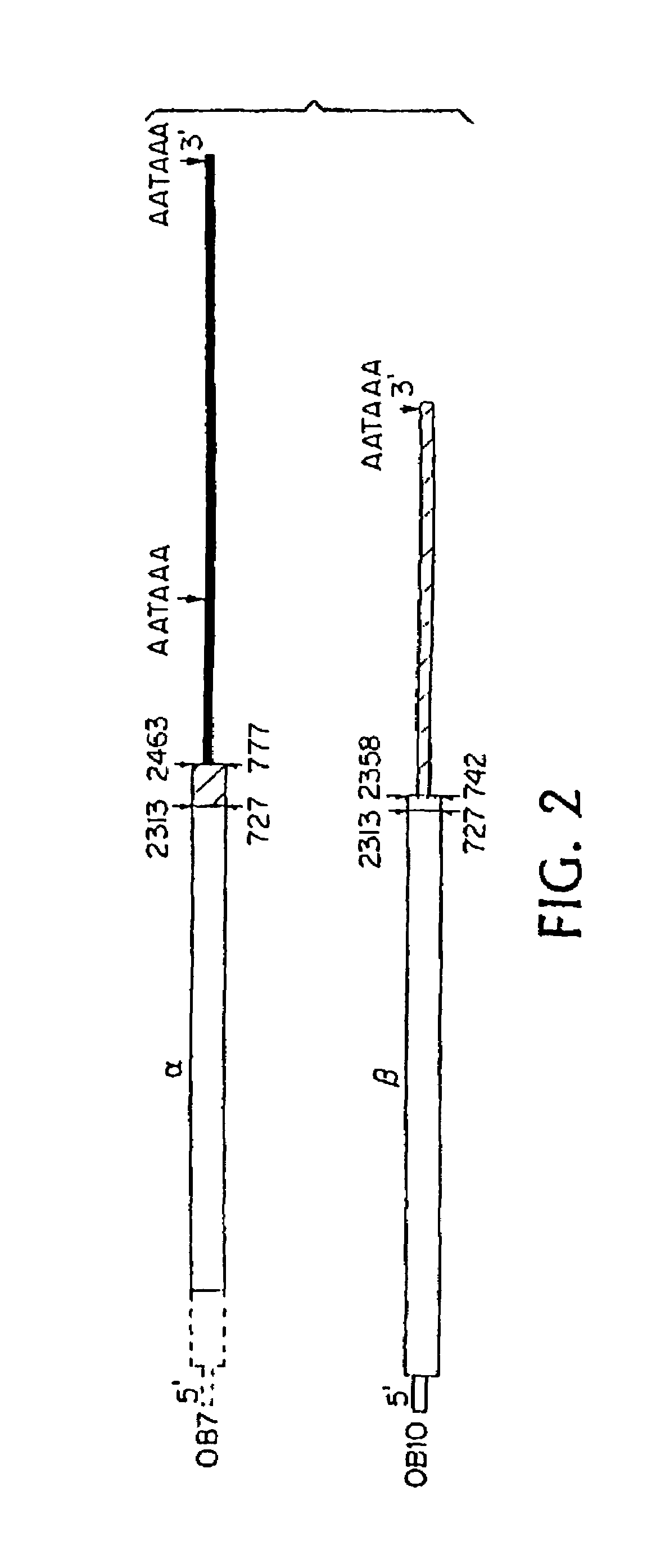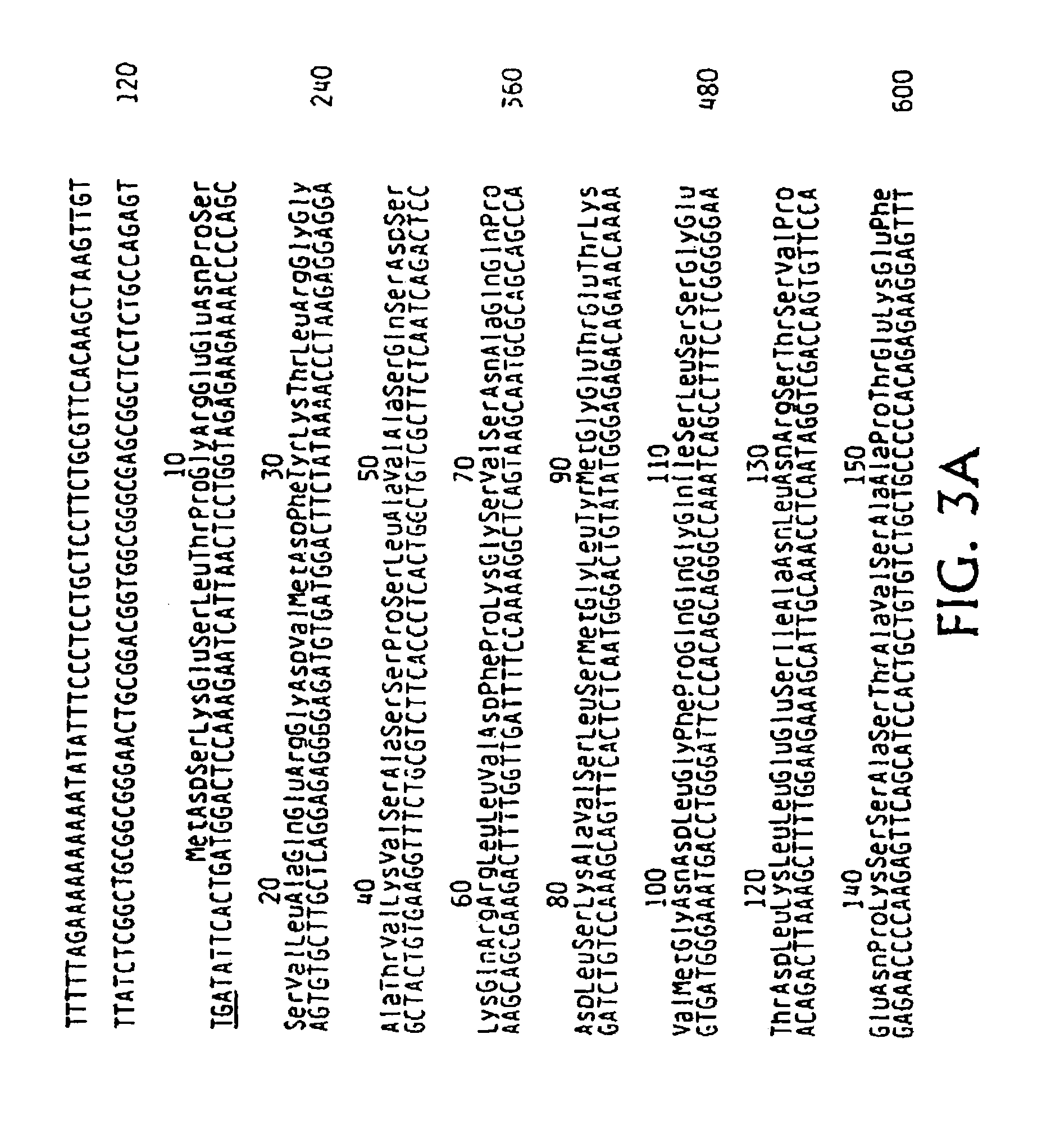Hormone receptor compositions and methods
a hormone receptor and composition technology, applied in the field of hormone receptor proteins and genes, can solve the problems of insufficient quantity and purity of receptor proteins, the inability to adequately characterize them, and the practicability of steroid and thyroid hormone receptor use, so as to achieve the effect of increasing the amount of receptors
- Summary
- Abstract
- Description
- Claims
- Application Information
AI Technical Summary
Benefits of technology
Problems solved by technology
Method used
Image
Examples
Embodiment Construction
[0037]FIG. 11 is a drawing showing a schematic representation of the hGR functional assay.
[0038]FIG. 12 is a photograph showing a Western blot analysis which illustrates expression of hGR protein.
[0039]FIG. 13 is a photograph of a blot which illustrates induction of CAT activity by hGR.
[0040]FIGS. 14 and 15 comprise a graph. FIG. 14 shows the dose-response to DEX of pRShGR alpha; FIG. 15 shows the titration of pRShGRa.
[0041]FIG. 16 is a schematic drawing showing the location of functional domains in hGR.
EXPERIMENTAL SECTION III
[0042]FIGS. 17–20 are comprised of three photographs and one schematic drawing, all of which concern to isolation of a genomic sequence related to the hGR gene. FIG. 17 is a photograph showing high-stringency Southern analysis of human placenta DNA digested with the indicated nucleases. FIG. 18 is similar except that it shows low-stringency Southern analysis. FIG. 19 is also a photograph of a Southern blot; it demonstrates isolation of the genomic sequence in ...
PUM
| Property | Measurement | Unit |
|---|---|---|
| incubation time | aaaaa | aaaaa |
| total volume | aaaaa | aaaaa |
| dissociation constant | aaaaa | aaaaa |
Abstract
Description
Claims
Application Information
 Login to View More
Login to View More - R&D
- Intellectual Property
- Life Sciences
- Materials
- Tech Scout
- Unparalleled Data Quality
- Higher Quality Content
- 60% Fewer Hallucinations
Browse by: Latest US Patents, China's latest patents, Technical Efficacy Thesaurus, Application Domain, Technology Topic, Popular Technical Reports.
© 2025 PatSnap. All rights reserved.Legal|Privacy policy|Modern Slavery Act Transparency Statement|Sitemap|About US| Contact US: help@patsnap.com



